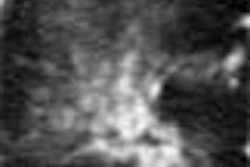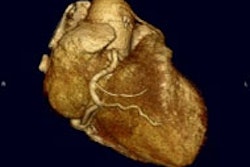Larry Weber, director of business development at Great Basin Imaging in Carson City, NV, explains the steps he took to develop a financial analysis for PET/CT at his outpatient imaging center.
Radiology is easily the most equipment-intensive discipline in medicine. And it is arguably at the forefront of innovation when it comes to modality enhancements that improve the quality of patient care. The downside is that adding a new technology to a radiology practice often comes with a steep entry price point.
"Although every one of our radiologists would love to be able to offer PET/CT services, you still have to cost-justify the acquisition of a $2 million to $2.5 million piece of equipment," observed Larry Weber, director of business development at Great Basin Imaging in Carson City, NV.
In a presentation at the 2003 American Healthcare Radiology Administrators imaging center administrator conference in Tampa, FL, Weber explained the steps he took to develop a financial analysis for PET/CT at his outpatient imaging center.
Assumptions
"Detailed and accurate assumptions are the key component to a successful and accurate financial analysis of any project," Weber noted.
Weber modeled the analysis for his market in terms of buy or lease options for a PET/CT system on a Microsoft Excel worksheet. His cost assumption data included equipment costs ($2.25 million), a service contract as a percentage of cost (10%), and lease payment terms on a monthly basis ($48,000).
He also included salary and labor expenses. These included the cost of technical labor per hour ($35), benefits as a percentage of salary (35%), and the cost of clerical and ancillary personnel on a per-hour basis ($16).
For his professional cost assumptions, Weber broke out PET and CT and assigned each a percentage value of receipts, 4.7% and 22%, respectively.
Operational expenses included radiopharmaceuticals ($375) and contrast costs ($35 at 50% utilization). Other supply costs per exam were calculated at $5 per exam. Rent was set at $1.60 a square foot per month, and utilities were factored in at $2.50 a square foot per month.
Billing costs were assumed to be 8.5%, inflation was fixed at 3%, and growth projections per year were forecast at 5%.
Revenue assumptions were also broken out for PET and CT as separate modalities. PET was projected at an average charge per scan of $2,900 and CT at $500; revenue per scan was calculated at $2,146 for PET and $330 for CT. The average daily number of scans for PET were forecast at two and for CT at four on the basis of a 252-day work year.
"Every one of your worksheets, such as cost projections, revenue projections, breakeven analysis, income analysis, and lease versus buy options, should be tied via formulas to your assumptions worksheet," Weber said. "This way, if you find you can’t cost-justify PET/CT today, and two years from now your reimbursement changes, or your market opportunity increases, you can plug in the new numbers and have a new financial analysis in minutes."
In addition to making data manipulation easier, Weber said the formula-based worksheets allow both the administrator and others to identify how the values were derived.
Cost projections
Cost projections should analyze startup costs, fixed costs associated with daily operations, and variable costs associated with the daily operations, Weber said.
For his facility, Weber calculated his fixed costs both monthly and yearly. The fixed costs included:
- Rent
- Utilities
- Billing costs
- Clerical staff and benefits
- Technical labor and benefits
- Advertising
- Depreciation and amortization
- Licenses and taxes
- Medical and office supplies
- Radiopharmaceuticals
- Professional fess
- Service and maintenance
- Accounting and legal fees
Cost projections were then annualized over five years. On the basis of the values he assigned for his center, Weber calculated a total five-year cost of $7,240,000 for the purchase of a PET/CT.
Monthly lease terms were broken out into two areas: the cost of the lease per month and per year, and the service contract cost per month and per year. For an annual lease payment with service for a PET/CT, Weber derived a cost of $801,000.
Revenue projections and breakeven analysis
For revenue projections, Weber based his analysis solely on the local reimbursement for PET and CT services.
"You need to utilize your specific payor mix and collections percentage to establish the base for your revenue projections," Weber said.
Weber calculated various revenue scenarios on the basis of PET and CT exams per day, over the course of a work year. With a minimum of four scans per day, the facility would see $2,163,000 in created revenue from PET and $333,000 from CT, on an annual basis.
"The difficulty in creating a breakeven analysis for PET/CT is based on its dual-modality possibilities," Weber noted.
The breakeven analysis, which shows the point at which a service can be provided with no loss of revenue, was established by Weber with a baseline of one PET scan to every three CT scans conducted using PET/CT. Over a five-year period, Weber found that his center would need to conduct an average of 1.83 PET scans per day and 5.5 CT scans per day to break even.
To lease or buy?
By utilizing the data from his previous worksheets, plus a standardized income sheet developed for the practice, Weber was able to create a financial analysis for buying a PET/CT versus leasing a PET/CT.
Based on projected volumes of two PET scans and four CT scans per day, Weber came up with projected revenue per month of $1,414,000 for the modality in his center. His projected leasing expenses per month were calculated at $1,252,000, leaving projected net revenue of $162,000 per month. Projected monthly expenses for buying a PET/CT were $1,228,000, resulting in projected net revenue of $187,000 per month.
Weber said that his facility has not yet made the decision to either buy or lease a PET/CT. But he is confident that when it does, the analysis tools he’s employed will enable a fiscally prudent choice to be made.
"It’s important to spend most of your time on your assumptions and to ensure their correctness. The more accurate your assumptions are, the more accurate your analysis will be," he said.
By Jonathan S. Batchelor
AuntMinnie.com staff writer
November 14, 2003
Related Reading
Pairing of CT and PET scans may aid early lung cancer detection, August 22, 2003
Patience required for adding PET/CT to PACS, June 25, 2003
LSO PET/CT study wins Image of the Year, June 24, 2003
Swiss researchers assess effect of oral CT contrast agents in PET/CT studies, June 20, 2003
Integrated PET-CT better than either alone at staging non-small-cell lung cancer, June 19, 2003
Copyright © 2003 AuntMinnie.com




















